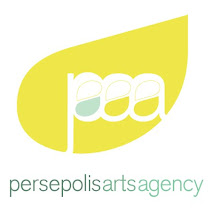After several drinks, Shigeru Ban bought a Chinese hat, reasoning to himself, as one does while inebriated, that he would incorporate its shape into an architectural design one day. Fast-forward to 2006, and you see how Ban incorporated that shape into the design of the roof of the Centre Pompidou-Metz. That was the story as the Director of the Centre Pompidou-Metz, Laurent Le Bon related it to an eager crowd of Charlotteans last night.
Mr. Le Bon was giving a lecture at the Bechtler Museum of Modern Art. The humorous Frenchman gave an overview of the Centre Pompidou-Metz's architectural design, inaugural exhibit called "Masterpieces?", and scheduled programs.
So, here we have two newly minted, highly celebrated institutions dedicated to modern art; a talented young man who is known as a leading authority on modern art; and a captivated audience made of modern art enthusiasts. What a contrast this setting was compared to a scene described in a New York Times article just the day before. According to Michael Kimmelman: Nazis had waged a campaign of destruction against modern works of art. Several pieces that had mysteriously escaped the Nazis have been found buried in Berlin over the past several months. These pieces are now on display in an exhibit in the Neues Museum.
For an extra scoop of irony: The Neuese Museum is just down the street from the Hilter exhibit, which puts on display artifacts of Nazi propaganda.
Add a healthy side of sauted irony: The Centre Pompidou-Metz sits on a plot of land formerly occupied by a Nazi rail station built during WWII.
Top it off with: Shigeru Ban was born in post-war Tokyo, which was a close ally of Hitler's Berlin during WWII.
And wash it down with a glass of: Happy Chanuka.
Shigeru Ban
The Centre Pompidou-Metz
Bechtler Museum of Modern Art
NY Times article by Michael Kimmelman
Thursday, December 2, 2010
Subscribe to:
Comments (Atom)
